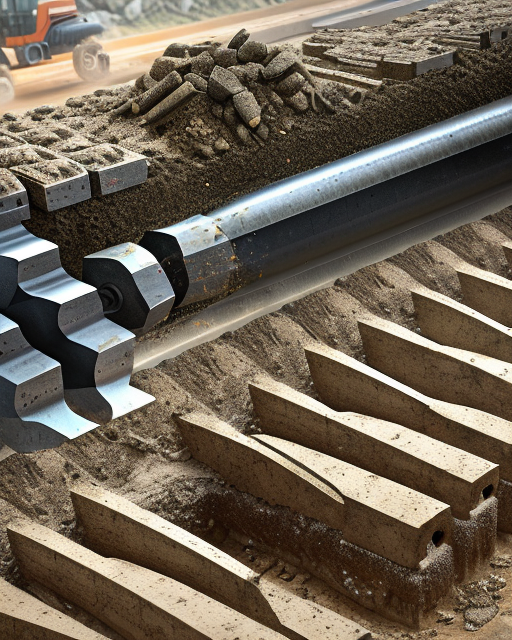The construction industry relies heavily on an array of specialized equipment, particularly foundation drilling tools. These tools perform the critical task of creating a solid and robust base for buildings, bridges, and other structures. At the heart of these tools, we find auger teeth, a vital component that significantly influences drilling efficiency and success.
I. Features of Auger Teeth
Auger teeth play a fundamental role in the foundation drilling process. They are designed to dig and break through various soil conditions, making them a key determinant of a drilling operation’s effectiveness. Auger teeth can be distinguished by several features including their shape, size, and material composition.
The shape and size of an auger tooth are meticulously designed to cater to the demands of different drilling conditions. These aspects can vary greatly, with teeth designed for hard, compacted soils being different from those meant for loose, sandy soils.
Material composition also plays a pivotal role in the performance and durability of the auger teeth. Typically, these teeth are constructed from high-quality, hardened steel, often combined with carbide tips to increase wear resistance. This composition helps auger teeth withstand harsh drilling environments and maintain their sharpness for longer periods, providing improved resistance against wear and tear.
II. Categories of Auger Teeth
Auger teeth can be categorized based on their design and functionality. The tooth pattern and cutting edge design are fundamental distinctions within these categories.
Flat, conical, and cutting teeth are some of the popular categories of auger teeth. Flat teeth are preferred for soft and medium soil conditions, whereas conical teeth are more effective in harder, compacted soils. Cutting teeth, designed with a more aggressive edge, are ideal for challenging conditions with mixed grounds.
The tooth pattern also affects the digging performance. For instance, a spiral pattern auger tooth provides a continuous cutting edge that improves soil removal efficiency.
III. Benefits of Auger Teeth
The use of auger teeth in foundation drilling offers numerous benefits. Firstly, they enhance the drilling efficiency, allowing for faster project completion and increased productivity. Auger teeth, designed for specific soil conditions, reduce the effort and time taken for drilling operations, thereby saving resources.
Secondly, auger teeth help minimize downtime and maintenance costs. Their superior wear resistance leads to fewer replacements and less frequent maintenance. This results in cost savings and uninterrupted work cycles, further increasing operational productivity.
IV. Pros and Cons of Auger Teeth
While auger teeth offer numerous benefits, it’s important to consider their potential drawbacks. They excel in versatility and ease of use, allowing for effective drilling in diverse soil conditions. However, they may struggle in certain conditions such as rocky terrain, where specific rock augers might be more suitable. Also, the initial investment for high-quality auger teeth can be high, but this cost is typically offset by the savings in maintenance and improved productivity.
Conclusion
The role of auger teeth in foundation drilling cannot be understated. They offer a myriad of benefits, including improved efficiency, reduced maintenance costs, and enhanced project productivity. However, choosing the right auger tooth requires understanding its features, categories, and the specific demands of the drilling condition. By making informed decisions, construction professionals can ensure optimum drilling performance and the successful execution of their projects. As the world of foundation drilling continues to evolve, it’s important to stay informed and adaptable, choosing the right tools for the job.
